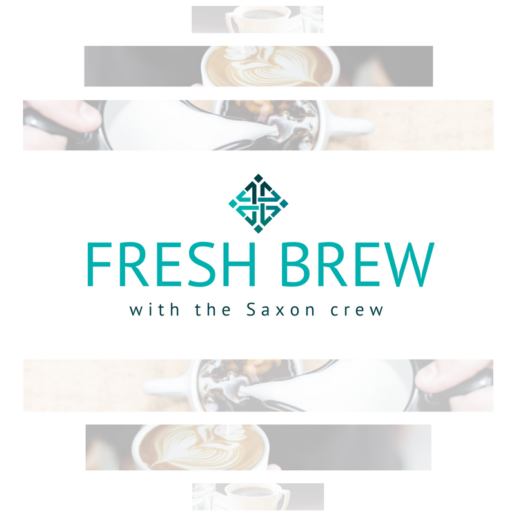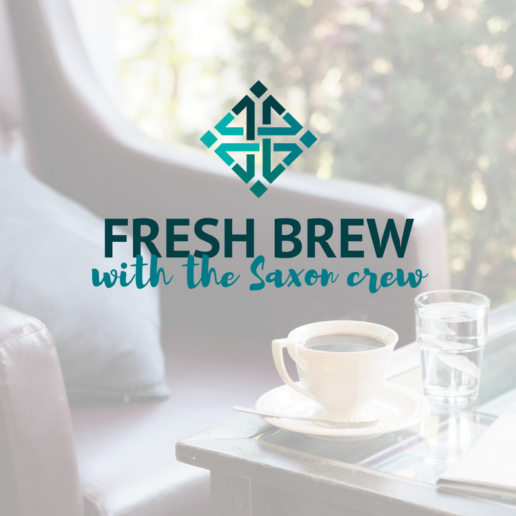Job Hoppers Seek Better Rewards, Recognition and Career Growth
Did you know: Only 33 percent of employees state that they are committed to staying at their jobs. If employees are disengaged from their work, it is easier for them to find other opportunities with promising recognition, rewards, and growth. Read this blog post to learn more about why employees might be searching for more generous benefits.
Employees have high expectations when it comes to job perks, and, if their employer doesn't offer what they want, they'll find another that will, new survey findings show.
Only one-third of employees (33 percent) say they are committed to staying at their jobs in 2020, compared to the 47 percent who had the same intention for 2019, according to the 2020 Engagement & Retention Report by employee-recognition software firm Achievers.
As the labor market stays tight, it's easy for disengaged employees to find work elsewhere. And they might try to: Just 19 percent of employees surveyed consider themselves "very engaged," while 14 percent say they are fully disengaged. Even the 32 percent with "average engagement" said they were open to new job opportunities.
The survey, conducted in October 2019, received 1,154 responses from employees across North America who were asked about their intentions for 2020.
"A substantial portion of today's workforce already has one foot out the door," said Natalie Baumgartner, Achievers' chief workforce scientist. Unless employers take steps to reverse these feelings, she said, "the risk of turnover and underperformance in 2020 is immense."
The survey found that the top three reasons employees are considering leaving their jobs are:
- Compensation (cited by 52 percent of respondents).
- Career growth (43 percent).
- Recognition (19 percent).
Employees Feel Unheard, Unrecognized
Ninety percent of workers said they are more likely to stay at a company that asks for, and acts on, employee feedback. But when asked how good their manager and company are at soliciting feedback, the most common answer was just "OK," asking for it once or twice a year. As for their employers acting on feedback, "OK" was again the most common response, at 44 percent. These employees said their manager and company only talk about feedback and make few changes based on it.
Companies should make sure that employee feedback reaches managers, Baumgartner advised, and equip managers to use this feedback to address staff needs "in a personalized and timely way." These actions, she noted, can range "from small acknowledgements to larger changes that improve the employee experience and, as a result, improve engagement and retention."
As for recognition, 82 percent of surveyed employees "strongly" or "somewhat" agreed that they wished they received more recognition at work, and another 30 percent of employees said they feel "not very" or "not at all" valued by superiors.
"When organizations recognize everyday behaviors that align with their culture and goals, they help reinforce them as well as the role each employee plays," Baumgartner said.
Frequent vs. Infrequent Job Changers
After wanting more money, feeling unappreciated is the top reason infrequent job changers could be driven to leave, another recent survey found.
Joblist, a website that compiles jobs from leading job boards, last October asked nearly 1,000 workers throughout the U.S. what would make them consider accepting an offer from another employer and then compared responses from frequent and infrequent job hoppers—those who had held two or more jobs in the past five years and those who had held just one job during the same period.
The average minimum salary increase that respondents seeking other jobs would accept to stay at their current employer was $15,491, which represents a 25 percent increase, on average, over the past five years. Perks such as unlimited paid vacation, student loan assistance and paid parental leave were cited by frequent job changers as factors that would make a potential employer more attractive.
"These perks may appeal more to younger workers who are less likely to have a 'lifer' mentality" toward their employer, according to Joblist.
While both frequent and infrequent job switchers said they would leave jobs for better pay, "people who switch jobs infrequently are more likely to leave because of feeling underappreciated or undervalued," according to Joblist. "For the most part, people who don't change jobs often have made an emotional commitment to their employers, so when they feel slighted because that investment isn't being reciprocated, they're more likely to leave." Conversely, people who leave frequently are more likely to see the employer-employee relationship as transactional, "so they're less affected by those feelings."
Is Turnover So Bad?
Turnover can be disruptive and costly, but it can also be an opportunity for employers to find and develop employees who are enthusiastic about the organization and the direction in which it's heading, according to a November 2019 report from compensation data and software firm PayScale.
"Some turnover is actually good for an organization—especially in the case of overpaid, under-performing employees," said report author Conrado Tapado, content marketing manager at PayScale. "Usually employees stay when they feel satisfied and fairly compensated for their work. But sometimes, employees stay for less positive reasons," he noted, including:
- They are overpaid. "Being overpaid leaves little incentive for workers to look for another job. They may realize how difficult it will be to find another organization that will match their salary. Thus, they are perfectly happy to stay where they are."
- They value their benefits. "Benefits are meant to help drive retention, which is generally a good thing. However, sometimes employees remain just for the benefits but would rather be working elsewhere. Eventually, those 'golden handcuffs' will begin to chafe, and your employees may start to feel resentful."
Health care, retirement savings and paid-time-off benefits should be competitive and focused on helping employees remain productive and feel financially secure, without becoming so rich that employees don't feel they can leave, the findings suggest. Pay should be calibrated to reward performance through variable compensation tied to achieving personal, team and organizational goals, with base pay increases made according to merit and not treated as an entitlement.
The Right Benefits Balance
"Creating a benefits package that incentivizes good employees to stay without deterring uninspired employees from leaving can be tricky," said Amy Stewart, PayScale's senior content marketing manager.
That can happen when employers offer benefits with a high monetary value that employees only receive if they stay put and hold tight, such as pensions or stock options that vest over time. People can also stay in an unpleasant situation for benefits that would be hard to find elsewhere, such as a paid sabbatical, a four-day workweek or paid child care, Stewart said.
A possible solution is to "experiment with rewarding some benefits in exchange for high performance, such as Fridays off or opportunities to work from home only if certain metrics are hit," she said.
Compensation is similar, Stewart explained, as employees with above-market pay are often reluctant to leave. "When you have a highly paid employee who isn't performing to a high standard, sometimes the answer isn't a change in compensation or a new job, but a new challenge. If their interest in their current work is waning, they might need new work, but it doesn't necessarily have to be at another organization," Stewart said. "Employees who have stopped learning in their current position may become revitalized in a position that offers them new opportunities to grow."
SOURCE: Miller, S. (06 February 2020) "Job Hoppers Seek Better Rewards, Recognition and Career Growth" (Web Blog Post). Retrieved from https://www.shrm.org/ResourcesAndTools/hr-topics/benefits/Pages/job-hoppers-seek-better-rewards-recognition-career-growth.aspx
The Saxon Advisor - February 2020
Compliance Check
what you need to know
Section 6055/6056 Reporting. Employers must file Forms 1094-B and 1095-B, and Forms 1094-C and 1095-C with the IRS by February 28, 2020 if they are filed on paper.
Form 1099-R Paper Filing. Employers must file Form 1099-R with the IRS by February 28, 2020 if they are filed on paper.
CMS Medicare Part D Disclosure. Employers that provide prescription drug coverage must disclose to the CMS whether the plan’s prescription drug coverage is creditable or non-creditable.
Summary of Material Modifications Distribution. Employers who offer a group health plan that is subject to ERISA must distribute a SMM for plan changes that were adopted at the beginning of the year that are material reductions in plan benefits or services.
Section 6055/6056 Individual Statements (2019 EXTENDED DEADLINE). Applicable large employers (ALEs) that sponsor self-insured health plans must disclose information about plan coverage to covered employees each year. This deadline was extended from January 31, 2020, to March 2, 2020, this year by the IRS.
ADP/ACP Refunds. Corrective refunds for a failed ADP/ACP test must be made by March 15, 2020, to avoid 10 percent excise tax penalties.
Section 6055/6056 Reporting (Electronic Filing Deadline). Applicable large employers (ALEs) that sponsor self-insured health plans are required by Internal Revenue Code Sections 6055 and 6056 to report information about the coverage to the IRS yearly. IRS Forms 1094-C and 1095-C are used to report coverage information. March 31, 2020, is the deadline to submit these forms if employers are filing electronically.
COBRA General Notice. Employers who provide group health plans must provide a written General Notice of COBRA rights to all covered employees and spouses (if applicable). This notice must be provided 90 days after health plan coverage begins.
Summary Plan Description (SPD). Employers who offer group health plans that are subject to ERISA must provide Summary Plan Descriptions (SPD) to employees who newly enrolled at the beginning of the plan year.
Form 1099-R (Electronic Filing Deadline). Employers must file Form 1099-R with the IRS by March 31, 2020, if they are filed electronically.
Form 5330. The Form 5330 excise tax return and payment for excess 2018 ADP/ACP contributions are due March 31, 2020.
In this Issue
- Upcoming Compliance Deadlines
- How to Speak to Your Employees About Their Intimidating Benefits – Featuring Jamie Charlton
- Fresh Brew Featuring Nat Gustafson
- This month’s Saxon U: What Employers Should Know About the SECURE Act
- March’s Saxon U: Saxon’s Humana GO365 Annual Wellness Clinic
- #CommunityStrong: American Heart Association Heart Mini Fundraising
What Employers Should Know About the SECURE Act
Join us for this interactive and educational Saxon U seminar with Todd Yawit, Director of Employer-Sponsored Retirement Plans at Saxon Financial Services, as we discuss what the SECURE Act is and how it impacts your employer-sponsored retirement plan.
How to Speak to Your Employees About Their Intimidating Benefits
Bringing the knowledge of our in-house advisors right to you...
Employers spend thousands annually to secure and offer benefits to their employees. However, a small amount of time and money are devoted to ensuring employees understand and appreciate their benefits. Properly communicating – what you say, how you say it and to whom you say it to – can make a tremendous difference in how employees think, feel and react to their benefits, employer and fellow co-workers.
In this installment of CenterStage, Jamie Charlton, founding partner and CEO of Saxon Financial Services, discusses the importance of offering sound education of benefits to employees, as well as how to effectively communicate their benefits in a clear, concise manner.
Fresh Brew Featuring Nat Gustafson
“Always be prepared.”
This month’s Fresh Brew features Nat Gustafson, an Account Manager at Saxon.
In his free time, Nat enjoys snowboarding. When thinking about his greatest adventure, he remembers traveling around Italy. He lives by the catchphrase of, “Roll up your sleeves.”
Nat’s favorite brew is Rhinegeist Truth. His favorite local spot to grab his favorite brew is Mount Lookout Tavern on Linwood Avenue.
Nat’s favorite snack to enjoy with his brew is Chicken wings.
This Month's #CommunityStrong:
American Heart Association Heart Mini Fundraising
This January, February & March, the Saxon team and their families will be teaming up to raise money for the American Heart Association Heart Mini!
Saxon’s Humana GO365 Annual Wellness Clinic
Learn what Go365 is, how it works, how to create engaged employees and how to maximize the 15% wellness incentive credit from the program.
Monthly compliance alerts, educational articles and events
- courtesy of Saxon Financial Advisors.

How Next-Gen Technology Can Keep HR Data Safe
In 2018, the FBI reported having 350,000 complaints of internet crimes, which is a rise of 23 percent over five years. With an increase in internet crimes, HR departments are turning to security approaches that are powered by artificial intelligence (AI). Read this blog post to learn more about how artificial intelligence is helping companies with cybersecurity.
As hackers grow ever-more inventive and data privacy laws are enacted around the globe, HR leaders are faced with the challenge of protecting and storing sensitive HR data but not curtailing employees' ability to use that data to make timely workforce decisions.
But there may not be enough cybersecurity colleagues to call upon for advice and technical assistance, which compounds those challenges. Approximately 65 percent of companies reported a cybersecurity staff shortage last year, according to the 2019 Cybersecurity Workforce Study conducted by (ISC)2, an international nonprofit association for IT professionals. As a result, more companies are turning to security strategies that don't require human intervention, such as cybersecurity powered by artificial intelligence (AI) that can proactively monitor and neutralize new kinds of cyberthreats.
New Strategies for More-Sophisticated Attacks
Research suggests that concerns over data security are occupying more of HR leaders' time and resources. The 2019-2020 Sierra-Cedar HR Systems Survey found a 17 percent increase from the prior year's survey in the number of respondents deploying cybersecurity strategies, with 70 percent of HR organizations reporting they have and regularly update such a strategy. That's good news, because the FBI reported receiving 350,000 complaints of Internet crimes in 2018, a rise of 23 percent over five years. Those crimes caused an estimated $2.7 billion in financial losses.
Security experts say the loss of sensitive data like payroll information, Social Security numbers and notes from internal investigations or employee assessments has implications far beyond the HR department.
"When HR systems are breached, it goes beyond the personal data stolen, because HR is central to so many processes across the organization," said Corey Williams, vice president of marketing and strategy at Idaptive, a cybersecurity firm in Santa Clara, Calif. "HR systems are the starting point for much of the access employees have throughout the organization. HR data doesn't sit on an island like other data, and when you have vulnerabilities at the HR level, you're exposing the entire enterprise to wider attacks."
AI-powered security tools represent a new approach to combating threats to HR data. While not a cure-all, these technologies can protect against malicious attacks driven by automated malware and have capabilities, such as pattern recognition, that can identify suspicious behavior and block potential problems or threatening online traffic in real time.
To protect against insider threats, whether malicious or from workers not following sound security practices, some AI-based cybersecurity tools can be trained to learn employees' behaviors when using corporate networks. Research shows that such threats are a growing problem. Insiders caused 48 percent of reported data breaches in organizations in 2019, according to a recent benchmark study from Cambridge, Mass.-based Forrester Research, up from 26 percent of total data breaches in 2015.
More companies are adopting "zero trust" policies that feature a "never trust, always verify" approach to network access or identity authentication and employ tools like multifactor authentication (MFA). MFA is a way to confirm user identities through at least two different factors. In the last year, according to the Sierra-Cedar survey, large organizations increased their use of MFA by 20 percent, and approximately 55 percent of small organizations reported using MFA for HR applications.
Williams said stolen or weak user credentials is still the top cause of data breaches in organizations. "We've seen growing sophistication in the way passwords and credentials get stolen," Williams said. "That includes malware, hackers writing more convincing phishing e-mails that get employees to click on harmful links and other approaches. Companies have found that depending on passwords alone for access is becoming untenable."
Balancing Security with the User Experience
HR leaders have to strike a balance between taking the right data-security measures and ensuring employees can still use HR networks and software in efficient and user-friendly ways—a balance that ideally won't make the workforce feel excessively monitored or handcuffed when using technology.
"Security is often viewed as a teeter-totter, where you are either increasing data security or you are improving the user experience with technology," Williams said. "But it doesn't have to be an either-or scenario."
For example, employees who typically access the same corporate networks or applications in the same fashion likely don't need additional security oversight, but someone accessing that same system from a country he's never been to before and with a different device would need more controls.
"We're seeing more innovation in applying security tools to separate high-risk from low-risk system access," Williams said.
HR leaders also can help enhance security by encouraging their companies to re-evaluate user access policies, experts say. "As people work for a long time in companies, they tend to accumulate access to systems, and that access doesn't necessarily get taken away as they move up or around a company," Williams said. "Employees are often 'over-provisioned' in terms of their access to sensitive data in systems, which can create increased vulnerability for companies." Automated processes tied to the life cycle management of employees can ensure system access is changed or removed as people change roles in a company, he said.
James Graham-Cumming, chief technology officer for Cloudflare, a cybersecurity company in San Francisco, said being more judicious in granting data access is a wise but sometimes overlooked security strategy. "It's not uncommon for CEOs or other senior leaders in a company to have access to all or most corporate systems because they simply feel a need for that access," Graham-Cumming said. "Yet these are more-visible or even public figures who are often targets for hacking. The reality is your C-suite or vice presidents may not need access to all of your systems."
Managing Vendor Risk
Data security and privacy threats can grow as HR functions add more technology platforms to their ecosystems and create more integrations with third-party providers. A recent study by research and advisory firm Gartner found that because human capital management systems are built to integrate with many third-party services—such as LinkedIn, for example—those integrations can expose organizations to risk through "misconfigurations" that result in unintentional data leakage. Depending on the level of integration, problems with security in vendor systems can open the door for attackers, the Gartner study found, as was the case with the retailer Target in 2014.
Security experts say HR leaders should ensure vendors have best-practice data security and privacy protocols in place, such as MFA, in addition to passing an external Service Organization Control, or SOC, 2 audit, which confirms they're in compliance with recommended practices for data security, processing integrity, ensuring privacy and more.
Jared Lucas, chief people officer with the cybersecurity firm MobileIron in San Francisco, said security-related employee training also is more important than ever as malware grows more sophisticated, phishing attacks increase and bad actors use AI-powered methods to hack corporate systems.
"Effective, regularly updated training in what to look for and what to be wary of can close a lot of holes in a company's data security strategy," Lucas said.
SOURCE: Zielinski, D. (10 February 2020) "How Next-Gen Technology Can Keep HR Data Safe" (Web Blog Post). Retrieved from https://www.shrm.org/resourcesandtools/hr-topics/technology/pages/next-gen-technology-can-keep-hr-data-safe.aspx
How to Manage Intergenerational Conflict in the Workplace
With there being at least four generations working together in the workplace, there can be multiple multi-generational conflicts that come into fruition. Although the success of a company should be the common goal for the workforce, it can be difficult to manage the conflict between each of the generations that are a part of the same organization. Read this blog post to learn about how to handle conflicts between multiple generations in the workplace.
When Brian Formato began working as an HR manager for Golden Books, the editorial staffers of the now-defunct publisher of children's books were mostly in their late 50s or early 60s and had been with the company for 25 years or longer.
After the company was purchased, it added more than 200 new jobs in one year, with most new hires being recent college grads. The new generation of employees brought fresh ideas but were also far more focused on immediate gratification than long-term success, Formato said. As a result, many veteran employees took early retirement because they couldn't stand by and watch the company they had devoted their careers to change so drastically overnight.
"What was left was a group of high-energy amateurs that lacked the industry knowledge, as well as the discipline, to negotiate attractive deals with the writers," Formato said. Revenues soon fell. "After more than 50 years in business, the company was forced into bankruptcy."
While this may sound like a typical clash between Millennials and Baby Boomers, it's noteworthy that this happened before Millennials were in the workforce and when most Boomers were in their 40s. However, it does highlight the perennial clash that occurs—in every generation—between newcomers with fresh perspectives and more-experienced elders.
There are at least four generations now in the workplace: Baby Boomers, Generation X, Millennials and Generation Z. Managing a multigenerational workforce with so many different perspectives, experiences, values and goals poses a unique organizational challenge for company leaders, managers and HR professionals. However, "generational differences" aren't always the real issue.
"Companies invest millions of dollars in training and development because of their beliefs about generational differences," said Jennifer C. Deal, a senior research scientist at the Center for Creative Leadership in Greensboro, N.C., and co-author of What Millennials Want from Work: How to Maximize Engagement in Today's Workforce (McGraw-Hill Education, 2015). "They do it because they believe it's true, even though the evidence doesn't support those beliefs."
Deal believes that life stage and position are better predictors of behavior than the generation a person was born into. "Most intergenerational conflicts are fundamentally about power or clout," she said. "A young person who wants more clout wants to be noticed. They have new ideas that aren't being listened to. An older person wants their experience to be recognized and appreciated. Everyone wants to be heard and respected."
We need to be careful about generational research because it puts people in a box, said Val Grubb, author of Clash of the Generations: Managing the New Workplace Reality (Wiley, 2016) and CEO of Val Grubb and Associates in New Orleans. "The key to understanding someone's behavior is to look at the individual, and the best way to find out how to motivate and engage is to ask them what matters to them."
Establishing Norms for Working Together
Haydn Shaw still finds value in traditional generational research, as long as it does not lead to stereotyping.
"Statistical generalizations are an aid to conversation, not a substitute for it. When it comes to understanding another person, nothing replaces conversation," said Shaw, author of Sticking Points: How to Get 4 Generations Working Together in the 12 Places They Come Apart (Tyndale Momentum, 2013). "The greatest fear in my work is that people will try to shortcut by using the categories rather than the conversations."
To stimulate productive conversations, Shaw has identified numerous "sticking points" where generational differences tend to emerge, particularly around the use of technology, communication, feedback, time management, work/life balance and organizational structure. Managers need to start conversations at those points so they can better understand the situation.
In Tammy Erickson's experience, misunderstandings about time and place are common among team members from different generations.
"Older generations tend to be more linear and traditional, while younger generations are looser and more spontaneous around time and place," said Erickson, CEO of Boston-based consulting firm Tammy Erickson Associates. To resolve those differences, she recommends that managers determine which norms work best for the team based on collective preferences and the work that needs to be accomplished.
Preferences around the use of technology is another potential sticking point. Generally, older employees tend to prefer e-mail, while younger employees prefer texting. While preferences matter, experts say the needs and goals of the team as a whole should take priority over any individual preference.
According to research conducted by Kathryn Bartol, a professor of leadership and innovation at the University of Maryland, College Park, communication among team members improves significantly when teams match the technology to the task. While text-based media is generally more useful for sharing daily information, for example, video chats and telephone conversations are better for brainstorming, problem-solving and relationship-building.
Shaw has developed a five-part process to help resolve these differences:
- Acknowledge. Talk about generational differences. "You can't solve a problem if you don't acknowledge it exists."
- Appreciate. Focus on the "why," not the "what," and the common needs. "The 'what' divides us. The 'why' is a uniter."
- Flex. Agree on how to accommodate different approaches.
- Leverage. Maximize the strengths of each generation. For example, if an organization decides to use the messaging platform Slack as a communication tool, there will inevitably be people who are uncomfortable with a technology they don't recognize or understand. A manager or leader can recruit an older team member who is comfortable and experienced in using this technology to coach, train and mentor the novice Slack users.
- Resolve. Determine which option will yield the best results if flexing isn't enough.
Dismantling Stereotypes One Relationship at a Time
"Stereotyping is a symptom of discrimination. It's important to treat people equally but not necessarily the same," Formato said. "Self-awareness is the key to effectively managing generational differences. Managers must be in touch with their own beliefs, values and work attitudes and understand that these may be different from the people they manage."
Managers and leaders need that self-awareness to make sure their own biases are not skewing how work is distributed. "Subtle things that leaders do can undercut respect for diversity of age," Grub said. "Who do you give plum assignments to? Do you automatically assign younger employees to technology because you assume older employees can't handle it? These biases stifle enthusiasm and innovation."
In an Addison Group study of 1,000 workers representing multiple generations, 90 percent reported satisfaction with the diversity of age ranges in their workplace. However, the study also found that 35 percent feel their company's culture and processes favor one generation over others. Forty-five percent of respondents feel their employers are biased toward Millennials.
Rather than prefer one generation over another, organizations need to develop and recognize the unique value of each individual, as well as the synergy that can be created between people with different experiences and perspectives.
Formato encourages companies to use appreciative inquiry to advance that goal. Appreciative inquiry focuses on strengths rather than weaknesses by recognizing that people with different perspectives and experiences and at different life stages are all able to work collaboratively.
The leader can also help team members build positive relationships by encouraging them to get to know each other better. Volunteer programs often promote this kind of camaraderie, as do team-building exercises.
Formato uses Patrick Lencioni's personal histories activity to help team members build trust and find common ground. Each person on a team prepares a slide with photos and answers these three questions:
- Where did you grow up?
- How many siblings do you have, and where do you fall in that order?
- Describe a unique or interesting challenge or experience that shaped who you are.
"This activity always brings a team closer together," Formato said. "People find common experiences, and they get to know the whole person."
This can happen spontaneously as well. When the president of a small New York City foundation asked his employees to share stories about their sports activities in high school, he was delighted to learn that there was a high school fencer on his team. What he didn't anticipate is how the younger women (most of whom were administrative staff) would end up bonding with a much older female executive when she lamented how, in a pre-Title IX era, there weren't a lot of sports teams for women. This led to an equally interesting conversation about life lessons learned through team sports and other team activities.
Although the president started the conversation as an icebreaker, he opened the door to a deeper discussion about what it means to be a member of a team and how each person's personal history informs his or her participation as a team member.
Uniting Around a Common Purpose
When team members rally around a common vision, purpose or goal, there is often a greater sense of unity that, in turn, translates into a better customer experience.
When Formato first began working with a small software-as-a-service company in Santa Clara, Calif., the CEO and senior leadership wanted him to help the team become more closely aligned. One of his first efforts to do so was to ask the team, "What does this company do better, special or different?"
The answers were not well-aligned. After diving deeper into their successes, they discovered that while the software solution was important, what they were really selling was their knowledge and ability to manage relationships.
"They build trust with their clients and are truly focused on customer success," Formato said. He describes this as their "groove" and emphasizes that, as they scale, they must keep their focus on the customer experience. It's a reminder that, as the company continues to grow, customer retention will still be as important as new-customer acquisition.
Although each member of the team has personal strengths, weaknesses and preferences, what unites them all is striving toward a common purpose and set of goals.
"It's up to the leader to make sure they are leveraging their strengths and working together as a team," Formato said.
SOURCE: Hirsch, A. (05 February 2020) "How to Manage Intergenerational Conflict in the Workplace" (Web Blog Post). Retrieved from https://www.shrm.org/ResourcesAndTools/hr-topics/employee-relations/Pages/How-to-Manage-Intergenerational-Conflict-in-the-Workplace.aspx
Top Challenges for Managers in 2020
Technology and rising trends are creating new challenges for managers to handle. Different situations regarding employees from Generation Z and gig workers, mental health and vaping are creating new ways for managers to interact with employees. Read this blog post to learn more regarding how managers are facing these trials.
Managers in 2020 will face some new challenges, many having to do with their youngest workers. Among those challenges: leading employees from Generation Z and gig workers, addressing mental health issues and helping vapers kick the habit.
Understanding Generation Z
Generation Z workers—generally, those born in 1995 or later—should be on every manager's radar. "Within the next two or three years, they will become the fastest-growing percent of the workforce," said Jason Dorsey, a Generation Z researcher and co-founder of the Center for Generational Kinetics, a research and solutions company in Austin, Texas.
"They don't remember a time before smartphones or social media," he said. They live on their phones, not their laptops, and that's the way they want to communicate—on and off the job. "Gen Z expects to go through the entire application process on a mobile device."
Dorsey said managers often tell him that they don't remember young adults asking about retirement plans, but today's young workers do. "It's the aftershock of the Great Recession, when they saw their parents struggle," Dorsey said.
And Generation Z considers flexible scheduling to be a given, not a perk, Dorsey said. He advises managers who want to attract and retain young workers to offer not only flexible schedules but also flexibility on a start date and the ability to work remotely.
Finally, employees from Generation Z want to have access to their pay beyond the typical twice-a-month paycheck. Platforms such as Instant Financial, which allows workers to access a portion of their pay after every work shift, are appealing, Dorsey said.
Holding on to Generation Z employees may take some coaxing, said Cheryl Cran, founder of NextMapping, a future-of-work consultancy headquartered in Vancouver, British Columbia, Canada. "They are far more entrepreneurial than any other generation," she said, noting that many are gig workers by choice because they value their freedom. Hence, she said, "managers need to think about how to give them freedom" in a traditional job, whether that means offering remote work, flexible scheduling or another solution.
Understanding Gig-Worker Laws
An estimated 15 million adults in the U.S. have alternative work arrangements, according to the Bureau of Labor Statistics. However, concerns about whether employers should classify these workers as employees has spurred states to propose task forces or legislation, according to the National Conference of State Legislatures. Congress, meanwhile, is assessing H.R. 2474, Protecting the Right to Organize Act of 2019. The aim of these efforts is universal: to stop the exploitation of nonemployee workers.
But that goal can misfire, contend some gig workers who are worried about losing their livelihood. California's AB 5, which took effect Jan. 1 and requires businesses to reclassify many independent contractors as employees, has already triggered controversy, including lawsuits challenging it on constitutional and other grounds and pushback from independent journalists, photographers, interpreters, musicians, truckers and others the law doesn't exempt.
Many of these independent workers tend to be young adults who value the flexibility that comes with freelancing. But that flexibility can make traditional employees at the same company resentful. Inspiring teamwork will be no small task, said Alec Levenson, Ph.D., senior research scientist at the USC Marshall Center for Effective Organizations.
"We are at the tipping point of employers hiring people from all different [work] arrangements," he said. "There is not enough focus on productivity, how to get people to work together as a team."
Destigmatizing Mental Health Issues
Mental health disorders, according to the U.S. Centers for Disease Control and Prevention, are among the most burdensome health concerns in the workplace. Nearly 1 in 5 adults reported having some type of mental illness in 2017; stress symptoms, such as headaches or feeling overwhelmed or anxious, are also common.
Adults from Generation Z report the highest stress levels, according to the American Psychological Association's 2019 Stress in America survey. On a scale of 1 to 10, 10 being the highest level of stress, Generation Z reported an overall stress level of 5.8. Generation X averaged 5.5, Millennials 5.4 and Baby Boomers 4.2.
In a tight labor market, where there is stiff competition for talent, managers who show concern about their workers' mental health will stand out to applicants and existing employees, said LuAnn Heinen, vice president for well-being and productivity for the National Business Group on Health (NBGH), a nonprofit headquartered in Washington, D.C., that represents large employers' perspectives on health policy.
In a 2019 NBGH survey, 43 percent of managers said they had a formal mental health strategy in place, including strategies to address depression, anxiety and stress; opioid and other substance abuse; sleep disorders; and workplace bullying.
The managers said the most important components of those strategies are making employees aware of the importance of mental health; hosting mental health awareness events; and training managers on what mental health is, how to recognize trouble signs and how to refer workers to mental health resources.
Even the best mental health programs won't succeed, however, if people don't feel comfortable accessing them, Heinen pointed out. Managers who need help talking with workers about mental health issues can turn to programs such as MakeItOK.org.
Helping Vapers Quit
As of Jan. 7, 2020, a lung illness tied to vaping nicotine or products containing tetrahydrocannabinol, the chemical in marijuana responsible for the high, had resulted in 2,668 hospitalizations and 60 deaths. Employees who vape—many of them young adults—may need help to end their habit.
Programs to help people quit need to be tailored to the generation of workers you're targeting and that cohort's preferred communication style, Heinen said.
Truth Initiative, a nonprofit in Washington, D.C., devoted to eliminating tobacco use, has fine-tuned its decade-old digital tobacco-cessation platform developed with the Mayo Clinic. "We launched a program specifically to address the needs of vapers," said Amanda Graham, Ph.D., chief of innovations for Truth Initiative. The quit-vaping program uses text messages, preferred by many younger adults, and includes instant message support if users feel they are slipping.
SOURCE: Doheny, K. (06 February 2020) "Top Challenges for Managers in 2020" (Web Blog Post). Retrieved from https://www.shrm.org/ResourcesAndTools/hr-topics/people-managers/Pages/Top-Challenges-for-Managers-in-2020.aspx
Reminder: Medicare Part D Notices Are Due to CMS by Feb. 29
The federal Centers for Medicare & Medicaid Services (CMS) require disclosures regarding coverage that is either "creditable" or "non-creditable" each calendar year. The notice and disclosure deadline for those who provide prescription drug coverage is due February 29, 2020. Read this blog post to learn more about the Medicare Part D notice.
Each year, group health plan sponsors that provide prescription drug coverage to individuals eligible for Medicare Part D must disclose to the federal Centers for Medicare & Medicaid Services (CMS) whether that coverage is "creditable" or "non-creditable." Prescription drug coverage is "creditable" when it is at least actuarially equivalent to Medicare Part D prescription drug coverage.
The disclosure obligation applies to all plan sponsors that provide prescription drug coverage, even those that offer prescription drug coverage only to active employees and not to retirees. Calendar year plans must submit this year's disclosure by Feb. 29, 2020.
Background
Individuals who fail to enroll in Medicare Part D prescription drug coverage when first eligible may be subject to late enrollment penalties if they go 63 consecutive days or longer without creditable prescription drug coverage. Because of this potential penalty, both Medicare Part D-eligible individuals and the CMS need to know whether a group health plan's prescription drug coverage is creditable or non-creditable.
Plan sponsors that provide prescription drug coverage must furnish Part D-eligible individuals with a notice disclosing the creditable or non-creditable status of their coverage before the beginning of the Medicare Part D annual enrollment period and at certain other times.
Plan sponsors must also disclose to CMS, on an annual basis and at certain other times, whether the coverage they provide is creditable or non-creditable. The submission deadline for this year's disclosure to CMS by calendar year plans is approaching.
Creditable Coverage Disclosures to CMS
Plan sponsors generally must disclose creditable coverage status to CMS within 60 days after the beginning of each plan year. Disclosure is made using the Disclosure to CMS Form on the CMS website. An entity that does not offer outpatient prescription drug benefits to any Part D-eligible individual on the first day of its plan year is not required to complete the CMS disclosure form for that plan year. Plan sponsors that contract directly with Medicare as a Part D plan or that contract with a Part D plan to provide qualified prescription drug coverage are also exempt from the CMS disclosure requirement for individuals who participate in the Part D plan.
In addition to the annual disclosure, plan sponsors must submit a new disclosure form to CMS within 30 days following any change in the creditable coverage status of a prescription drug plan. This includes both a change in the coverage offered so that it is no longer creditable (or non-creditable) and the termination of a creditable coverage option. A new disclosure form must also be submitted to CMS within 30 days after the termination of a prescription drug plan.
The disclosure requirement applies to all plan sponsors that provide prescription drug coverage to Part D-eligible individuals, even those that do not make prescription drug coverage available to retirees.
Calendar year plans must submit this year's disclosure to CMS by Feb. 29, 2020.
| Is disclosure required If an employer doesn't offer retiree coverage? | ||
| All Part D-eligible individuals covered under an employer's prescription drug plan — regardless of whether the coverage is primary or secondary to Medicare Part D — should be included in the disclosure. "Part D-eligible individuals" are generally age 65 and older or under age 65 and disabled, and include active employees and their dependents, COBRA participants and their dependents, and retirees and their dependents. Even employers without retiree coverage may need to file the disclosure. |
Information Needed to Complete Disclosure
In preparing the disclosure to CMS, plan sponsors need to:
- Identify the number of prescription drug options offered to Medicare-eligible individuals. This is the total number of benefit options offered, excluding any benefit options the plan sponsor is claiming under the retiree drug subsidy (RDS) program (i.e., benefit options for which the plan sponsor is expected to collect the subsidy) or that are employer group waiver plans (EGWPs).
For example, a plan sponsor with a PPO and an indemnity option covering actives and an option for retirees for which it is receiving RDS would report two prescription drug options. - Determine the number of benefit options offered that are creditable coverage and the number that are non‑creditable.
- Estimate the total number of Part D-eligible individuals expected to have coverage under the plan at the start of the plan year (or, if both creditable and non-creditable coverage options are offered, estimate the total number of Part D-eligible individuals expected to enroll in each coverage category). This includes Part D-eligible active employees, retirees, and disabled individuals and any of their Part D-eligible dependents and any individuals on COBRA who are Part D eligible.
The estimate should not include any Part D-eligible retirees being claimed under the RDS program or retirees in an EGWP (because that coverage is Medicare Part D coverage).
Individuals who will become Part D eligible after the start of the plan year should not be included in the count for that year. However, they must be provided a notice of creditable or non-creditable coverage prior to their initial Part D enrollment period. - Provide the most recent calendar date on which the required notices of creditable or non-creditable coverage were provided.
| Why doesn't the disclosure requirement apply to EGWPs or retiree plans where employer is receiving RDS payments? | ||
| Employers that provide prescription drug coverage through a Medicare Part D employer group waiver plan are exempt from the disclosure requirement because an EGWP is Medicare Part D coverage.
An employer participating in the retiree drug subsidy program must have already certified to CMS that its drug coverage is creditable. |
In Closing
Plan sponsors should review the instructions carefully before completing the Disclosure to CMS Form to make sure that they have all necessary information, and calendar year plans should report the information by Feb. 29, 2020.
Richard Stover, FSA, MAAA, is a principal at HR advisory firm Buck. Leslye Laderman, JD, LLM, is a principal in the Knowledge Resource Center at Buck. This article originally appeared in the Feb. 5, 2020 issue of Buck's For Your Information. © 2020 Buck Global LLC. All rights reserved. Republished with permission.
SOURCE: Stover, R.; Laderman, L. (06 February 2020) "Reminder: Medicare Part D Notices Are Due to CMS by Feb. 29" (Web Blog Post). Retrieved from https://www.shrm.org/resourcesandtools/hr-topics/benefits/pages/reminder-medicare-part-d-notices-due-to-cms.aspx
Fresh Brew with Nat Gustafson
Welcome to our monthly segment, Fresh Brew, where we will be exploring the delicious coffees, teas, and snacks of some of our employees! You can look forward to our Fresh Brew blog post on the first Friday of every month.
“Always be prepared.”
Nat Gustafson is an Account Manager at Saxon Financial.
Nat began his career at Total Quality Logistics. For four months, he learned to control himself in hectic situations and to better manage his time. Most importantly, he taught himself how to effectively communicate with others in difficult situations.
In his free time, Nat enjoys snowboarding. When thinking about his greatest adventure, he remembers traveling around Italy. He lives by the catchphrase of, “Roll up your sleeves.”


Rhinegeist Truth
Nat enjoys a Rhinegeist Truth, an indian pale ale, from his favorite local spot, Mount Lookout Tavern on Linwood Avenue.

Chicken Wings
Nat enjoys sipping on his favorite brew while eating chicken wings from Mount Lookout Tavern.
Reducing the stigma of mental illness with digital treatment options
With mental health becoming a subject that is more relevant in workplace cultures, employers are realizing that providing resources regarding mental health could benefit employees' health and productivity. One in four people are affected by a mental health disorder during their life, and it's important for employers to provide as many resources for their employees. Read this blog post to learn how providing resources for employees could help long-term.
Mental health has become a global epidemic, and employers are quickly becoming aware of how important it is to provide resources for workers who may be struggling.
“We’ve gone through an evolution from where mental health wasn’t being addressed at all within the workplace to a point today where there is a far higher level of awareness,” says Ken Cahill, CEO of SilverCloud Health, a digital mental health company. “But we have to move from that to providing an actionable plan and a solution within the workplace.”
One in four people will be affected by a mental health disorder during their life, and 450 million people have mental health issues, according to the World Health Organization. The financial drain on the workplace is staggering: mental illness accounts for $194 billion in lost revenue per year due to increased healthcare costs, lost productivity and absenteeism, according to the National Alliance on Mental Illness.
“People aren't being given the toolkits to help them handle the key challenges that are there in life,” Cahill says. “Those [challenges] will leak into the everyday work environment.”
Despite the growing number of people living with mental health disorders, finding accessible and affordable treatment is often a barrier to getting help. Two-thirds of people with mental disorders never seek treatment from health professionals, according to WHO.
“The level of acceptance around mental health is improving, but the system is getting worse — our access to mental health professionals, psychiatrists and others is getting worse,” says Michael Thompson, president and CEO of the National Alliance of Healthcare Purchaser Coalitions.
SilverCloud hopes to ease the burden through their benefits platform, treating mental health needs through online modules, journaling and coaching.
“It’s very much about the full spectrum of care — challenges around work-life balance, resilience, sleep, financial debt, anxiety and depression,” Cahill says. “What we're delivering to the organization is a full end-to-end solution, and everyone can access it.”
SilverCloud uses techniques backed by cognitive behavioral therapy, one of the most common forms of treatment. Users start by taking a short quiz, which identifies a variety of risk factors associated with their mental health and assigns them various program modules 30 to 40 minutes in length. Users also have access to in-person coaches who can personalize and suggest other modules and features, depending on their needs.
Cahill says SilverCloud can be used in conjunction with in-person therapy and other mental health treatments, but 65% of users report a clinically significant improvement in the reduction or severity of their symptoms, in line with person-to-person therapy outcomes. Currently, over 200 healthcare, payor and employee benefits organizations are working with SilverCloud. Express Scripts and Mercer Canada will soon be able to get access to the company’s digital mental health platform as well.
SilverCloud is part of a growing group of digital mental health providers hoping to meet the demands of employees placing a high priority on accessible, tech-based mental health benefits. Benefitfocus includes access to Happify through their BenefitsPlace platform. The mental health app uses gamification to teach mood training. Additionally, Cisco recently partnered with Vida, a chronic care app, to offer teletherapy through its digital coaching platform.
Cahill says the focus on the importance of good mental health will push employers to keep fighting for these critical resources.
“The reason we all hold down a job, work as functioning members of society, hold on to relationships and those kinds of things are the result of good mental health,” he says. “There’s still work to be done, but the strides that have been made are a real sea change from where we were two or three years ago.”
SOURCE: Place, A. (31 January 2020) "Reducing the stigma of mental illness with digital treatment options" (Web Blog Post). Retrieved from https://www.benefitnews.com/news/reducing-the-the-stigma-of-mental-illness-with-digital-treatment-options
How to Leave Work at Work
Bringing work home after a workday is a common factor that disrupts family time, and even causes more mental stress. In order to maintain a work-life balance, it's important to know that there is a way to leave your work life, at work. Read this blog post to learn simple tips on how to keep a healthy balance between work and home-life.
Some jobs have very clear lines between when you’re “on” and when you’re “off,” while in others the lines are blurred — or potentially nonexistent. That makes not being distracted by work, especially mentally, a major challenge.
This can lead to sitting at dinner while your daughter tells a story about her day, but instead of hearing her you’re wondering whether an email from your boss came through. It can mean exchanging the time you could have spent on sleep, exercise, or talking with your spouse glued to your laptop. And it can look like keeping your work life in order, while your finances or home are a mess because you don’t take time to pay bills, plan for retirement, or tidy up.
As I shared in my article on boundaries, what is possible can vary depending on your particular job, work culture, and coworkers. But in most cases, you can reduce how distracted you feel by work during times when you’re not working.
As a time management coach, I’ve found these four steps can help. I encourage you to challenge yourself to gradually implement these changes and see how much you can leave your work at work — both physically and mentally — in 2020.
Step 1: Define “After Hours”
If you have a traditional 9-to-5 job, your hours are set for you. But if you work in an environment with flexible hours, you’ll need to think through when you want to be on and off the clock. If your employer has a certain number of hours that you’re expected to work each week, start by seeing how to fit those hours around your fixed personal commitments, like taking your kids to school or extracurricular activities, making a certain train, or attending an exercise class you really enjoy. When do you need to start and stop to put in the proper work time?
On the other hand, if your company doesn’t have a specific amount of time that you need to work — say, you freelance or have a results-only work environment — but your job still takes over almost all of your waking hours, take the reverse approach. Think through how many hours you want for activities like sleep, exercise, family, friends, cleaning, finances, etc. Then see how much time you need to reserve on a daily and weekly basis to fit in those personal priorities. That then defines the parameters of when you want to be “off hours.”
Step 2: Have Mental Clarity
Next, make sure you have mental clarity on what needs to get done and when you will complete it. This includes having a place where you write down the many tasks that you need to do, whether that’s in a notebook, a task management app, a project management system, or in your calendar. The important point is that you’re not lying in bed at night trying to remember everything on your mental to-do list.
Then once you have this list, plan out your work. That could mean setting aside time in your schedule to work on a report in advance, putting time in your calendar to prep for your next day’s meetings, or just plotting out specific hours that you will reserve for getting your own work done versus attending meetings or responding to other people’s requests. This planning reduces anxiety that something will fall through the cracks or that you’ll miss a deadline.
The final part of increasing your mental clarity is to have an end-of-workday wrap-up. During this time, look over your daily to-do list and calendar to make sure that everything that absolutely must get done — specifically, those tasks that had a hard deadline — were completed. You also can do a quick scan of your email to ensure any urgent messages are attended to before you leave the office. For some people, it works well to do this as the last thing they do that day, say 15 to 30 minutes before heading out. For others, it’s better to put a reminder in their calendars for an hour or two before they need to leave. This gives them a more generous time period to wrap items up.
Step 3: Communicate with Your Colleagues
In some job situations, you can set a definite after-hours boundary like, after 6 pm, I’m offline. But in other situations, the lines are much blurrier.
For those in situations where you can have a clear dividing line between work and home, I would encourage you to directly communicate that with your colleagues. For example, you might say, “I typically leave work at 6 pm, so if you contact me after that time, you can expect to hear back from me sometime after 9 am the next business day.” Or in some cases your actions can simply set that tone. If they never hear from you between 6 pm and 9 am, that will set the expectation that you’re not available.
But for others, who have jobs that require more constant connectivity, you may want to set some guidelines to control how people reach you, thereby reducing unwanted interruptions. For example, you could say, “It’s fine to text me during the day with questions, but after 6 pm, please send me an email instead of a text unless the situation is truly urgent.” Similarly, if you have a very flexible schedule where you take extended breaks during the day for things like going to the gym or picking your kids up after school, encourage people to reach out to you in specific, preferred ways that you establish. For instance, “There are some times during the day when I may be away from my computer. If you need a fast response, call or text me.” In these scenarios, you’ll know that only the most important work will take you away from your personal or family obligations via an urgent call or text, and you can turn your attention to non-urgent work once you have the bandwidth.
Step 4: Get Work Done at Work
It may seem crazy to say this, but I want to encourage you to give yourself permission to do work at work. For many, they perceive “real work” as something they reserve for post-5 or 6 pm, after everyone else has left the office or for after they’ve tucked their kids in bed for the night. People have this mindset because this time can seem like the few precious hours where no one is dropping by your office or asking you for anything immediately. But if you want to stop feeling distracted by work after hours, you need to actually do your work during the day.
Completing the actions under the mental clarity step will take you a long way forward in that process. Really guard your time. Put in time for project work. Place time in your calendar to answer email. And if follow-through requires going to a place other than your office to work, do it. Make and keep meetings with yourself to knock off tasks. It’s exceptionally difficult — if not impossible — to not be distracted about work when you’re stressed out because you haven’t gotten your work done.
And if you must (or want to) do some work outside of your standard day, make sure that you timebox it. For example, I will work from 8-9 pm tonight then stop. Or, I’ll put in three hours on Saturday from 1-4 pm, but then I won’t think about work before or after. It’s much better to designate a time and stick with it than it is to think about work all night or all weekend and do nothing.
As individuals, we need a mental break to do our best work, and taking time for ourselves — without the distraction of work — can help us become our best selves. I can’t guarantee that thoughts about work will never cross your mind, but with these four steps, you can reduce how much you’re distracted by work after hours.
SOURCE: Saunders, E. (03 February 2020) "How to Leave Work at Work" (Web Blog Post). Retrieved from https://hbr.org/2020/02/how-to-leave-work-at-work
Rising cost of healthcare is hurting HSAs
With HSA's providing a way for users to be able to reduce out-of-pocket costs for healthcare, deductibles still continue to rise. Read this blog post to learn more about why continuously raised healthcare costs are hurting current HSA's and HSA's that could be used for retirement.
Employees are increasingly putting money aside for their HSAs, but they’re using almost the entirety of it to cover basic health needs every year instead of saving the money for future expenses, according to Lively’s 2019 HSA Spend Report.
“People are putting money in and taking money out on a very regular basis, as opposed to trying to create some sort of nest egg for down the road,” says Alex Cyriac, CEO and Co-Founder of Lively.
The San Francisco-based HSA provider says 96% of annual contributions were spent on expected expenses and routine visits as opposed to unexpected health events and retirement care. In 2019, the average HSA account holder spent their savings on doctor visits and services (50%), prescription drug costs (10%), dental care (16%), and vision and eyewear (5%).
The rising cost of healthcare is a factor in these savings trends: Americans spent $11,172 per person on healthcare in 2018, including the rising cost of health insurance, which increased 13.2%, according to National Health Expenditure Accounts. For retirees, the figures are shocking: a healthy 65-year-old couple retiring in 2019 is projected to spend $369,000 in today’s dollars on healthcare over their lifetime, according to consulting firm Milliman.
“Because people can't even afford to save, there's going to be a very low likelihood that most Americans are going to be able to afford their healthcare costs in retirement,” says Shobin Uralil, COO and Co-Founder of Lively.
HSAs were intended to be a way for consumers to save and spend for medical expenses tax-free. Additionally, its biggest benefit comes from being able to use funds saved in an HSA in retirement — when earnings are lowest and healthcare is most expensive. However, just 4% of HSA users had invested assets, according to the Employee Benefit Research Institute.
While HSAs have surged in popularity as a way for more Americans to reduce overall out-of-pocket healthcare spending, more education is required to help account holders understand the benefits of saving and investing their annual contributions for the long-term, the Lively report states.
“As deductibles continue to rise, people just don't seem to have an alternative source for being able to fund those expenses, so they are continuing to dip into their HSA.” Cyriac says. “I think this is just reflective of the broader market trend of healthcare costs continuing to rise, and more and more of those costs being disproportionately passed down to the user.”
SOURCE: Nedlund, E. (29 January 2020) "Rising cost of healthcare is hurting HSAs" (Web Blog Post). Retrieved from https://www.employeebenefitadviser.com/news/rising-cost-of-healthcare-is-hurting-hsas












